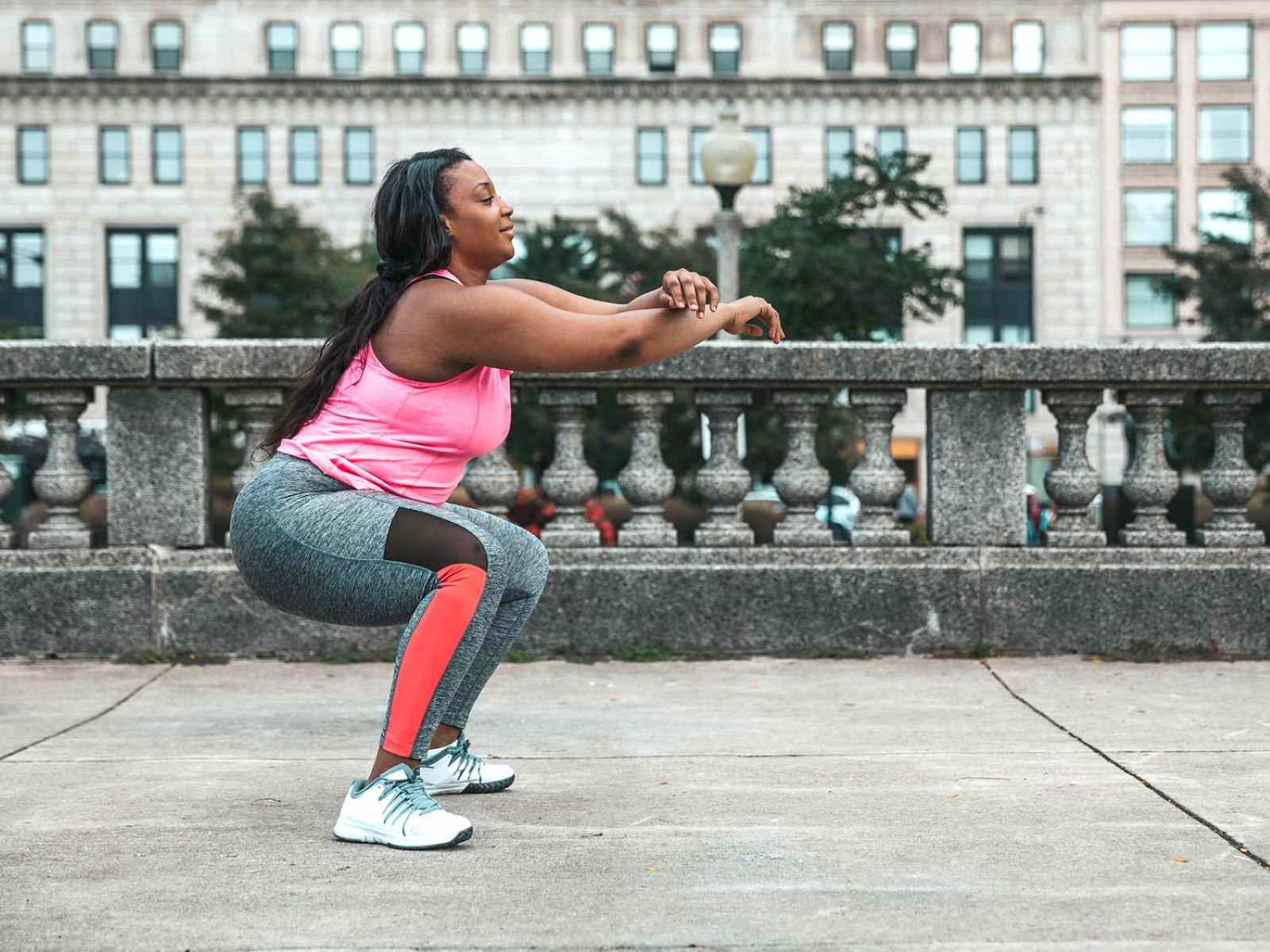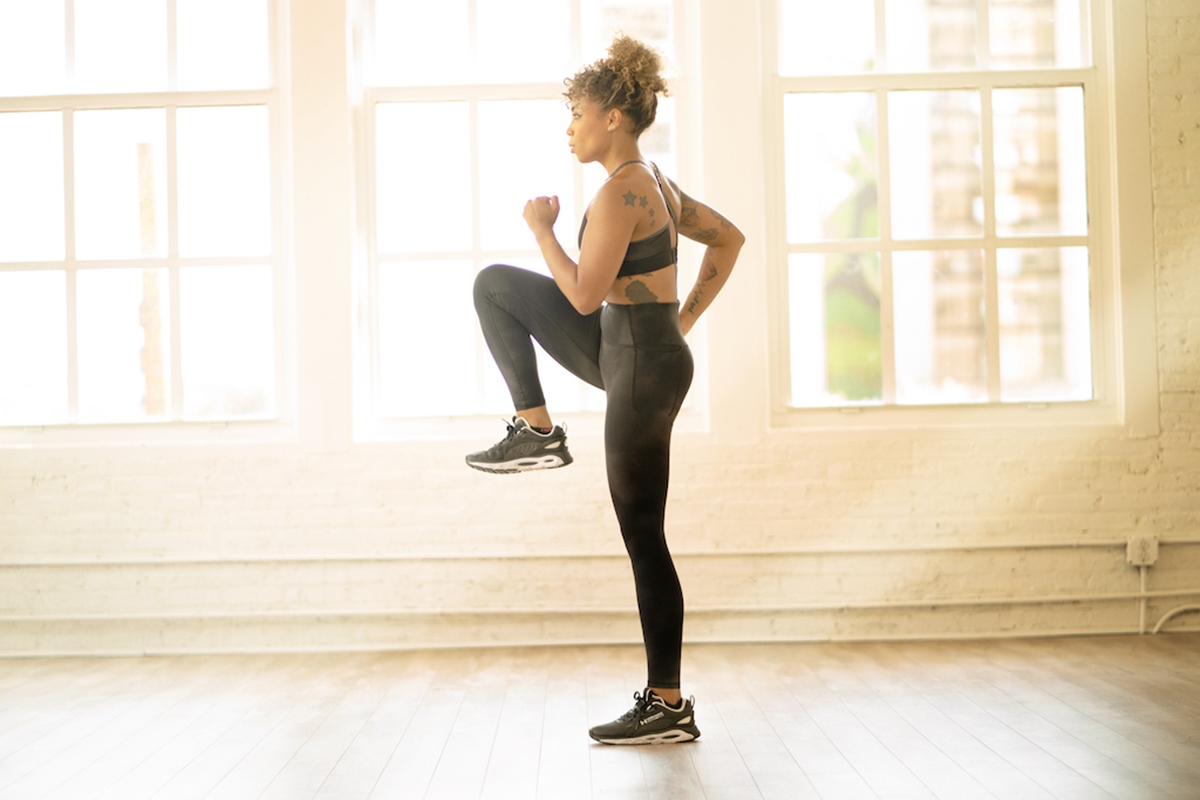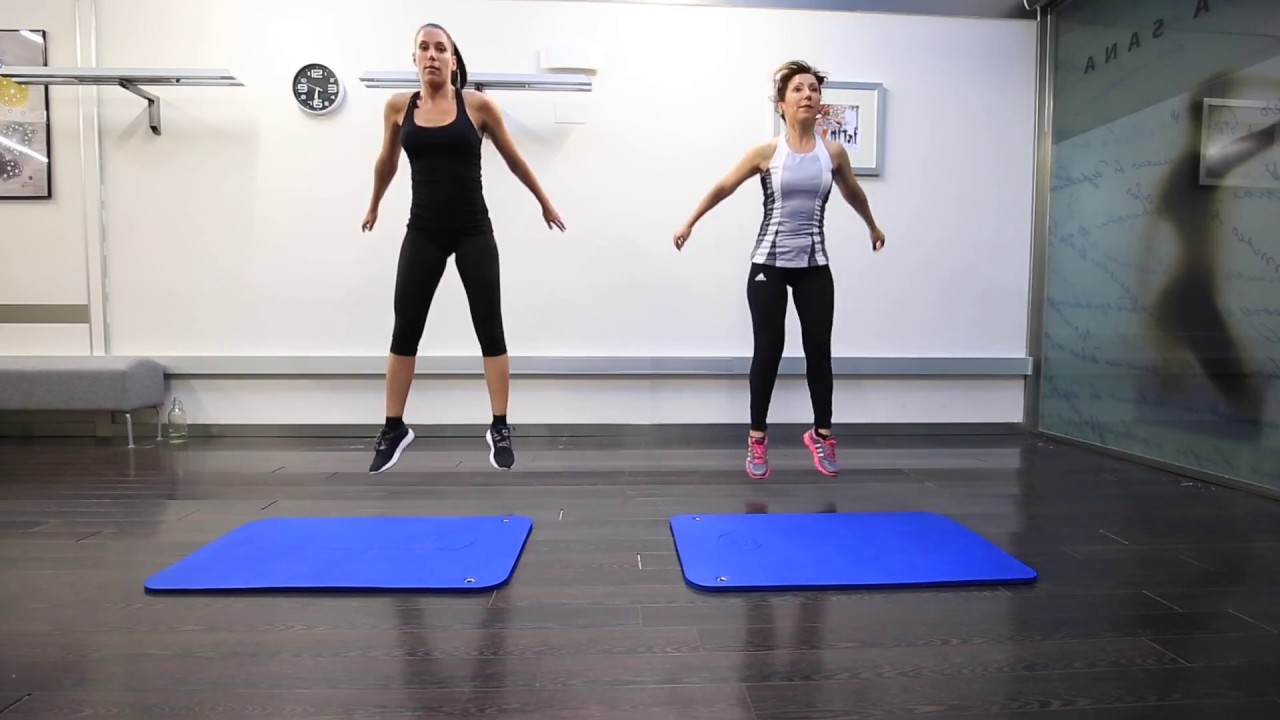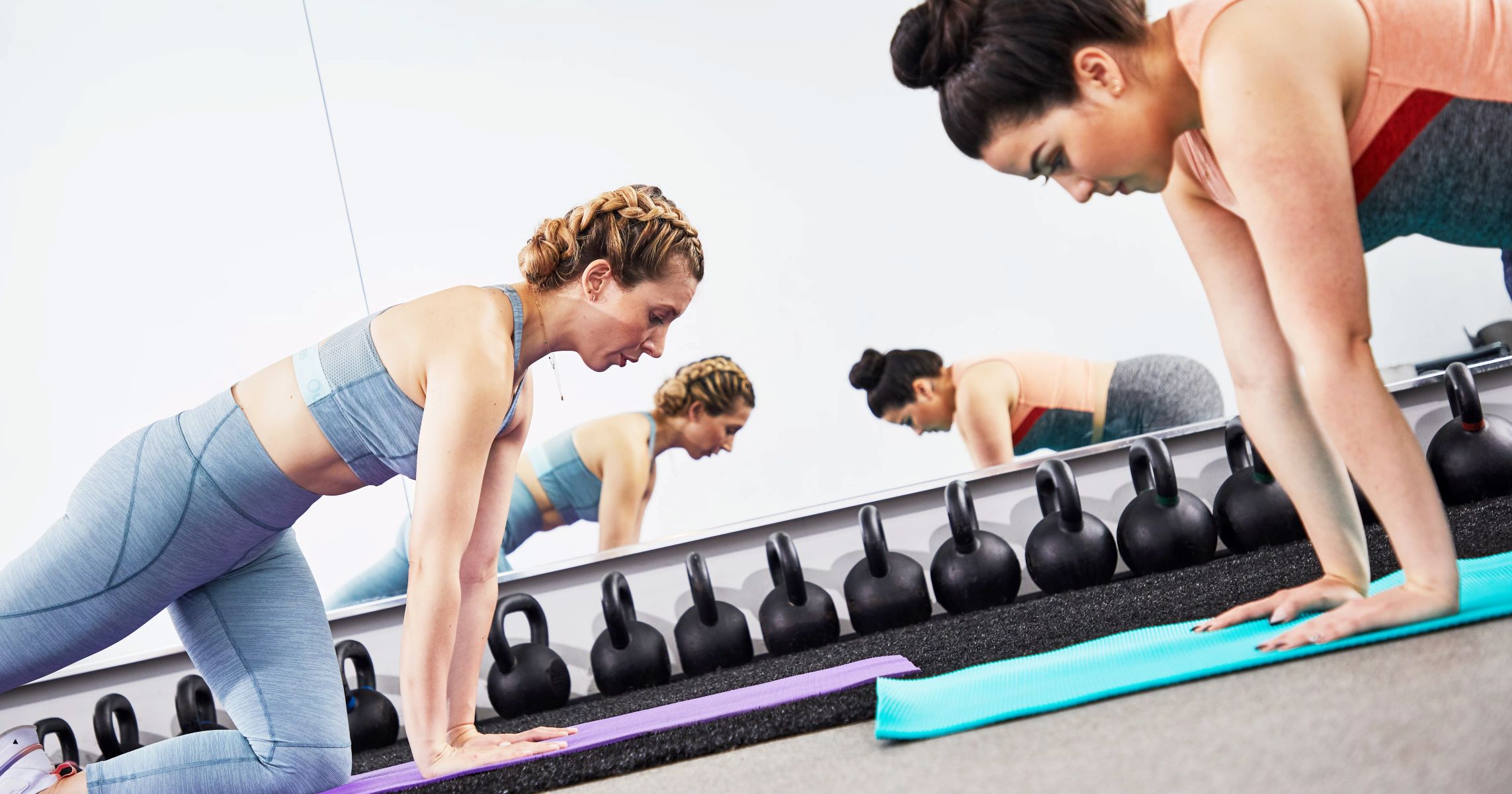

Featured
What Do Burpees Workout
Modified: August 21, 2023
Find out what burpees workout targets and how to do them correctly. This featured exercise is a full body workout that can help you burn calories and build strength.
Introduction
Are you looking for an effective full-body exercise that can boost your fitness level and burn calories? Look no further than burpees. Whether you’re a fitness enthusiast or just starting your fitness journey, burpees are a versatile and challenging exercise that can help you achieve your goals.
Burpees are often considered a staple in high-intensity interval training (HIIT) workouts due to their ability to target multiple muscle groups while providing cardiovascular benefits. This exercise requires no equipment and can be done anywhere, making it a convenient choice for anyone seeking a time-efficient and effective workout.
In this article, we will delve into the world of burpees, exploring their benefits, the muscles they target, correct form, variations, and their effectiveness for weight loss. By the end of this article, you will have a comprehensive understanding of why burpees are a popular exercise choice among fitness enthusiasts.
So, tighten your shoelaces, take a deep breath, and get ready to discover the incredible benefits of incorporating burpees into your fitness routine.
What are burpees?
Burpees are a compound exercise that combines strength training and cardiovascular conditioning. They are a full-body movement that incorporates elements of a squat, push-up, and jump. The exercise starts from a standing position, then quickly transitions into a squat, followed by a push-up, and ends with a jump.
The movement of burpees engages multiple muscle groups simultaneously, making it a highly efficient exercise. It targets the arms, shoulders, chest, core, glutes, and legs. The combination of these movements forces the body to work in unison, creating a high level of intensity and calorie burn.
One of the reasons burpees are considered a challenging exercise is because they can quickly elevate your heart rate, making them an excellent choice for cardiovascular conditioning. This intense cardiovascular aspect of burpees not only helps improve cardiovascular endurance but also aids in burning calories and fat.
What sets burpees apart from other exercises is their ability to mimic functional movements. They require coordination, balance, strength, and power, all of which are essential for daily activities and sports performance. By incorporating burpees into your workout routine, you can improve your overall fitness level and enhance your athletic ability.
While burpees may seem intimidating at first, they can be modified to match your fitness level. Beginners can start with a modified version that eliminates the push-up or jump, gradually progressing to the full burpee movement as strength and endurance improve.
Now that you have a better understanding of what burpees are, let’s explore the various benefits they offer!
The benefits of burpees
Burpees offer a wide range of benefits that make them a highly effective exercise for improving fitness. Here are some of the key advantages of incorporating burpees into your workout routine:
- Full-body workout: One of the biggest benefits of burpees is their ability to work multiple muscle groups simultaneously. From your arms and shoulders to your core, glutes, and legs, burpees engage both your upper and lower body, providing a comprehensive full-body workout in a single exercise.
- Cardiovascular conditioning: The high-intensity nature of burpees gets your heart rate up quickly, making them an excellent exercise for cardiovascular conditioning. Regularly incorporating burpees into your routine can improve endurance and stamina, benefiting your overall cardiovascular health.
- Strength development: Burpees are a compound exercise that targets multiple muscle groups, making them an effective way to build strength. They engage the muscles of your arms, shoulders, chest, core, glutes, and legs, helping to develop overall strength and muscular endurance.
- Calorie burn and weight loss: Due to their high-intensity nature, burpees can burn a significant number of calories in a short amount of time. They help increase your metabolic rate, leading to continued calorie burn even after you’ve finished your workout. Incorporating burpees into your routine can support weight loss and body fat reduction.
- Improved agility and coordination: Burpees involve dynamic movements that require coordination and balance. Regularly performing burpees can enhance your agility, coordination, and overall body control, which can be beneficial for various sports and daily activities.
- Time-efficient: Since burpees are a compound exercise that targets multiple muscle groups, they provide a time-efficient workout. You can get a full-body workout in a short amount of time, making burpees an excellent option for those with a busy schedule.
With these incredible benefits, it’s no wonder that burpees have become a popular exercise choice for fitness enthusiasts. Now that you understand the advantages of incorporating burpees into your routine, let’s explore the specific muscles that are targeted during a burpee!
Muscles worked during burpees
Burpees are a compound exercise that targets multiple muscle groups throughout your body. By engaging these muscles, you can develop overall strength, endurance, and muscular tone. Let’s take a closer look at the primary muscles worked during burpees:
- Quadriceps: The quadriceps, located in the front of your thighs, are heavily engaged during the squatting and jumping phases of a burpee. These muscles are responsible for extending your knees and providing power during the explosive jump.
- Glutes: Your glute muscles, which include the gluteus maximus, medius, and minimus, are activated during the jump and landing phase of the burpee. They help to propel your body upward and stabilize your hips during the movement.
- Hamstrings: The hamstrings, found at the back of your thighs, are engaged as you lower your body into the squat position during a burpee. They work to bend your knees and support the squatting movement.
- Core muscles: Burpees heavily engage the core muscles, including the rectus abdominis, obliques, and transverse abdominis. These muscles help stabilize your spine and pelvis during the exercise, ensuring proper form and alignment throughout the movement.
- Chest and triceps: The chest muscles, specifically the pectoralis major and minor, are activated during the push-up phase of a burpee. This movement targets your chest, shoulders, and triceps as you lower and raise your body towards the ground.
- Shoulders and arms: During the push-up and jump phases of a burpee, your shoulders and arms play a crucial role. The deltoid muscles in your shoulders, along with your triceps and biceps, are engaged as you perform the push-up and generate power for the explosive jump.
- Calves: The calf muscles, consisting of the gastrocnemius and soleus muscles, are activated during the explosive jump phase of a burpee. They help to push off the ground and provide power for the vertical leap.
By targeting these muscles, burpees provide a comprehensive full-body workout that helps to improve strength, endurance, and overall muscle tone. Whether you’re aiming to build lean muscle mass, improve athletic performance, or enhance your overall fitness, incorporating burpees into your routine can yield impressive results.
Now that we understand the muscles worked during a burpee, let’s move on to the next section: How to perform a burpee correctly.
How to perform a burpee correctly
Performing a burpee with proper form is crucial to maximize its effectiveness and prevent injury. Follow the step-by-step guide below to learn how to perform a burpee correctly:
- Starting position: Begin in a standing position with your feet shoulder-width apart.
- Squat down: Lower your body into a squat position, bending your knees and keeping your back straight. Place your hands on the floor in front of you, slightly wider than shoulder-width apart.
- Kick back: Kick your feet back and assume a plank or push-up position, with your arms fully extended, supporting your weight on your hands and toes.
- Lower body: Lower your chest towards the floor by bending your elbows, keeping them close to your body. Engage your core and keep your body straight and aligned throughout the movement.
- Push-up: Push yourself back up to the plank position by extending your arms, maintaining a strong and stable core.
- Jump: From the plank position, quickly jump your feet forward, landing them between your hands in a squat position.
- Jump up: Explode upwards into a vertical jump, extending your arms overhead.
- Land and repeat: Land softly with your knees slightly bent, returning to the starting position. Immediately repeat the entire movement for the desired number of repetitions or as instructed by your workout routine.
Remember to maintain proper form throughout the exercise. Keep your core engaged, back straight, and land softly during the jump to minimize the impact on your joints.
If you’re a beginner or looking to modify the exercise, you can simplify the movement by eliminating the push-up or the jump. For a modified version, step back into the plank position instead of kicking back or perform a squat instead of the jump.
Now that you’ve learned the correct technique for performing a burpee, let’s explore some variations that can add an extra challenge or target specific muscle groups.
Variations of burpees
Burpees can be modified and varied to suit different fitness levels, goals, and preferences. Adding variations to your burpee routine can help challenge your body in new ways and target specific muscle groups. Here are some popular variations of burpees:
- Modified burpees: If you’re just getting started or need a lower-impact option, you can perform a modified version of the burpee by eliminating the push-up or the jump. This allows you to focus on the squat and the plank portion of the exercise.
- Jump squat burpees: This variation adds an extra explosive power element to the burpee. After completing the push-up, instead of jumping straight up, perform a jump squat by bending your knees and explosively jumping off the ground from the squat position.
- Medicine ball burpees: Incorporating a medicine ball adds an element of instability and challenges your core stability. Hold a medicine ball in your hands throughout the exercise, performing each step of the burpee while holding onto the ball.
- Single-leg burpees: By performing the burpee with one leg lifted off the ground, you add an extra challenge and engage your muscles in a different way. Alternate legs during each repetition.
- Burpee with a tuck jump: This variation adds an explosive tuck jump at the end of the regular burpee. Instead of a regular jump, bring your knees up towards your chest, tucking them in mid-air before landing.
- Burpee with a push-up to a side plank: After completing the push-up portion of the burpee, transition into a side plank position, raising one arm towards the ceiling. Alternate sides with each repetition.
- Burpee box jumps: Set up a sturdy box or platform in front of you. After completing the regular burpee, explode into a box jump by jumping onto the platform and then stepping or jumping back down.
These variations can be incorporated into your workout routine to keep things interesting and challenge different muscle groups. Remember to choose variations that suit your fitness level and goals. Progress gradually and focus on maintaining proper form throughout the movements.
Now that you’re familiar with various burpee variations, let’s explore whether burpees are effective for weight loss.
Are burpees effective for weight loss?
If weight loss is one of your fitness goals, you may be wondering if burpees are effective for shedding those extra pounds. The answer is yes! Burpees are indeed an effective exercise for weight loss, and here’s why:
Burpees are a high-intensity exercise that combines strength training and cardiovascular conditioning. This combination results in a significant calorie burn during and after the workout. Since burpees engage multiple muscle groups and elevate your heart rate, they can help you burn calories at a faster rate compared to traditional cardio exercises.
Studies have shown that high-intensity exercises like burpees can increase your metabolic rate, allowing your body to continue burning calories even after you’ve finished your workout. This effect, known as excess post-exercise oxygen consumption (EPOC) or the “afterburn effect,” can help boost your calorie expenditure for several hours post-workout.
The intensity of burpees also contributes to fat loss. When you perform high-intensity exercises, your body needs to tap into its energy stores, including stored fat, to fuel the workout. As a result, consistent and regular burpee workouts can help you reduce overall body fat and create a leaner physique.
Furthermore, burpees can improve your overall fitness and body composition. By incorporating these challenging exercises into your workout routine, you can increase your muscle mass, which in turn raises your basal metabolic rate (BMR). A higher BMR means that your body burns more calories even at rest, making it easier to achieve a calorie deficit for weight loss.
However, it’s important to remember that while burpees can be beneficial for weight loss, they should be part of a comprehensive workout and nutrition plan. Weight loss ultimately depends on maintaining a calorie deficit, which means burning more calories than you consume. Pairing burpees with a balanced diet and incorporating other exercises that target different muscle groups can enhance your weight loss results.
It’s also worth mentioning that weight loss is a gradual process that varies from person to person. Consistency, proper form, and gradual progression are key when incorporating burpees into your fitness routine.
Now that we’ve explored the effectiveness of burpees for weight loss, let’s move on to some important tips for performing burpees safely.
Important tips for doing burpees safely
While burpees are a highly effective exercise, it’s important to prioritize safety to prevent injuries and ensure proper form. Keep the following tips in mind when performing burpees:
- Start with proper warm-up: Prior to starting your burpee workout, engage in a dynamic warm-up routine to prepare your muscles and joints. This can include exercises like jogging in place, arm circles, and bodyweight squats.
- Focus on proper form: Maintain proper form throughout each phase of the burpee. Keep your core engaged, back straight, and land softly during the jump to minimize impact on your joints.
- Listen to your body: Pay attention to how your body feels during the exercise. If you experience pain or discomfort, modify the movement or take a break. Pushing through pain can lead to injury.
- Progress gradually: If you’re new to burpees or returning after a break, start with modified versions and gradually increase the intensity and volume over time. This allows your body to adapt and minimize the risk of injury.
- Breathe properly: Maintain a steady and controlled breathing pattern throughout the exercise. Exhale during the push-up and inhale during the squat and jump phases.
- Choose appropriate footwear and surface: Wear supportive athletic shoes that provide stability and cushioning. Perform burpees on a non-slippery surface to avoid accidents and maintain stability.
- Stay hydrated: Drink plenty of water before, during, and after your burpee workout to stay hydrated and maintain optimal performance.
- Rest and recover: Allow your body sufficient rest and recovery time between burpee workouts. This helps prevent overuse injuries and allows your muscles to rebuild and grow stronger.
Remember, safety and proper form should always take precedence over the number of repetitions or speed. It’s better to perform fewer repetitions with correct form than to sacrifice form for quantity. Take your time, focus on quality movement, and gradually increase the intensity as your fitness level improves.
Now that you have these important tips in mind, you can confidently incorporate burpees into your fitness routine.
Conclusion
Burpees are a versatile and challenging exercise that offer numerous benefits for overall fitness and weight loss. By engaging multiple muscle groups and elevating your heart rate, burpees provide a full-body workout and cardiovascular conditioning. They can help improve strength, endurance, agility, and coordination, making them an excellent addition to any fitness routine.
Whether you’re a beginner or an experienced fitness enthusiast, burpees can be modified and adapted to suit your fitness level and goals. You can adjust the intensity by incorporating variations, such as jump squats, medicine ball burpees, or single-leg burpees. These variations can add variation to your routine and target specific muscle groups.
When performing burpees, it’s essential to prioritize safety and maintain proper form. Start with a proper warm-up, listen to your body, and progress gradually. Focus on breathing properly and choose appropriate footwear and surfaces to minimize the risk of injury. Remember to stay hydrated and allow your body sufficient rest and recovery time between workouts.
Ultimately, burpees can be an effective exercise for weight loss, as they burn calories, increase metabolic rate, and contribute to fat loss. However, it’s important to pair burpees with a balanced diet and a comprehensive workout plan to optimize weight loss results.
So, whether you’re looking to improve your overall fitness, lose weight, or challenge yourself with a high-intensity exercise, incorporate burpees into your routine. Embrace the versatility and effectiveness of this exercise and enjoy the variety it brings to your workouts. Get ready to sweat, feel the burn, and reap the rewards of incorporating burpees into your fitness journey!









